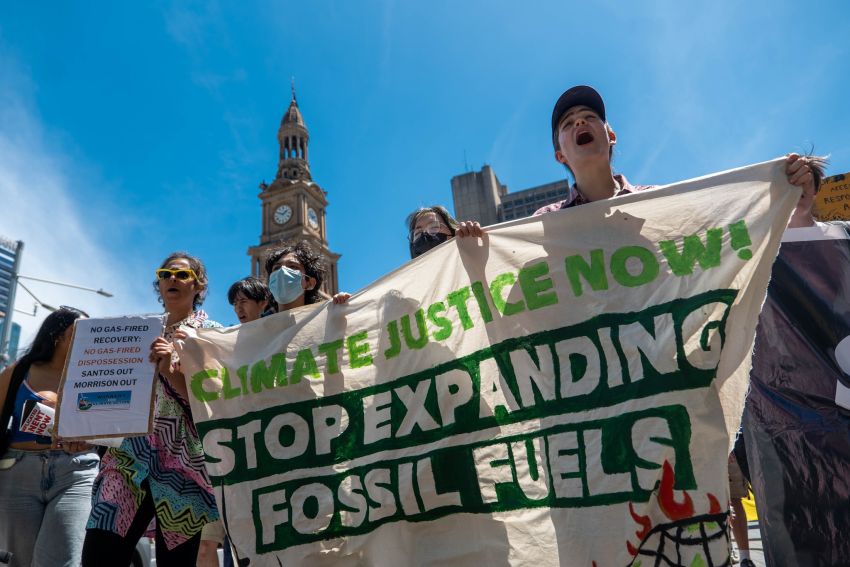
Climate change minister Chris Bowen had to concede, in the final parliamentary sitting days of the year, that Australia is not going to deliver on its climate promises.
Labor’s already too low 43% emission cuts target by 2030 in its Climate Change Act 2022 is not going to be met, Bowen said, suggesting it will be closer to 40%.
Emission forecasts project on the current trajectory that transport and fugitive emissions from fossil fuel will continue to rise, with the mining industry being the largest source of emissions in 2030.
Bowen’s shocking revelations, as part of the Annual Climate Change statement, don’t seem to have taken many by surprise.
The 76-page report says that “urgent action is needed to tackle the climate crisis” and then insists “urgent action is underway” — even though evidence for this latter statement is nowhere to be found as the report focuses on climate mitigation and adaptation. These are necessary, but they should not be bandied around as if they are the measures to stop climate change.
The June edition of the Quarterly Update of Australia’s National Greenhouse Gas Inventory said while the emissions intensity of the economy continued its long-term decline, including emissions per capita, national emissions had started to climb again especially in the electricity, transport and industrial processes sectors.

The longer-term decline in carbon dioxide is due to the shift in electricity generation away from coal towards renewables, it said. Mitigating this, however, is the long-term growth in the economy and transport activity “as well as the expansion of LNG [liquified natural gas] exports”.
Australia accounts for about 20% of global LNG exports and has the largest export capacity in operation, outstripping Qatar and the United States. Chevron Australia, Shell Energy, Woodside Petroleum, Origin Energy and Santos are the biggest producers.
Chevron has one of its largest LNG projects in Australia on Barrow Island, with a predicted life span of 40 years.
The Climate Council (CC) said the government's climate change statement “sends a stark warning” that the burning of fossil fuels such as gas, coal and oil “is accelerating with severe consequences already being felt by Australians here and now”.
All countries need to do more, but especially rich countries — like Australia — that are in a position to do more. The CC is pushing for a 75% cut in greenhouse gas emissions by 2030, and net zero shortly after.
In this final hard copy edition of Green Left for 2022, we bring you sobering analysis of how ineffective COP27 was in even getting commitments from signatory nations to cut greenhouse gas emissions in time to stop catastrophic climate change.
As climate change obliterates our Pacific neighbours, environment minister Tanya Plibersek is considering many more fossil fuel projects than the 10 offshore new oil and gas projects that resources minister Madeleine King has approved since May.
King is supporting Woodside’s controversial Scarborough gas project in the Burrup and Prime Minister Albanese has done the same for Santos' coal seam gas project in the Narrabri. Traditional Owners in both places are campaigning to stop the potential destruction.
Grassroots movements have gotten us to the point where governments can no longer deny climate change is happening. But those movements have to grow, deepen and avoid being sucked into false solutions, such as carbon trading, if they are going to force governments to take serious action.
GL will continue to continue to cover the movements for change. But like all not-for-profits, we have been feeling the pinch from spiralling costs. The COVID-19 pandemic has also made it harder for supporters to carry out their usual energetic fundraising efforts and we look like ending this year nearly $80,000 short on our Fighting Fund. Consequently, we are forced to make cut backs.
In 2023 our team will be looking to focus more on digital content creation and promotion and GL will move to a fortnightly hard copy while retaining a bi-weekly digital edition. Our supportership rates will remain the same.
To help sustain the project please donate what you can to our 2022 Fighting Fund. For a gift that lasts, perhaps you would like to sign a friend up as a supporter?
Thanks for your ongoing support.